Hardy climbers like clematis make a lovely addition to any garden. But when to plant clematis and what should you watch out for?

There is hardly anyone who does not know the beautiful clematis. Known as vase vine, this climbing plant beautifies walls, arbors and trellises with its lush blooms. If you want to enjoy the beautiful flowers next year, you should plant the clematis now. Read more about the right time as well as our useful tips for planting.
When to Plant Clematis? This Is the Right Time

When it comes to perennial plants, people often wonder about the right time for planting. As a rule, most of these can be planted both in spring and fall. This is due to the fact that at this time the plants take root more easily because the growth in length is reduced.
With clematis, however, fall planting, or more precisely late summer planting, is preferable. At the end of August or beginning of September, the soil temperature is between 59 to 73F/15 to 23C degrees, which is optimal for root growth. In addition, Clematis will enchant with its beautiful blooms in the first year if planted in late summer instead of spring.
Plant Clematis Properly: This Is How to Do It
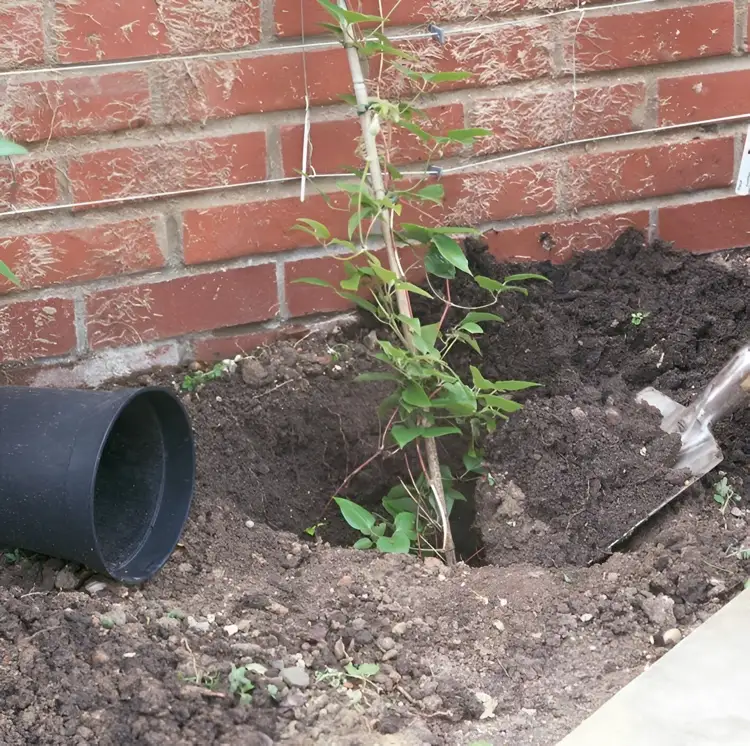
Well, if you already know that now is the right time to plant, you can roll up your sleeves and get started. Here are all the main steps to follow when planting clematis.
Also read: Hardy Climbing Plants for the Balcony and Garden: Our Favorite Types and Varieties!
Choose the Right Species
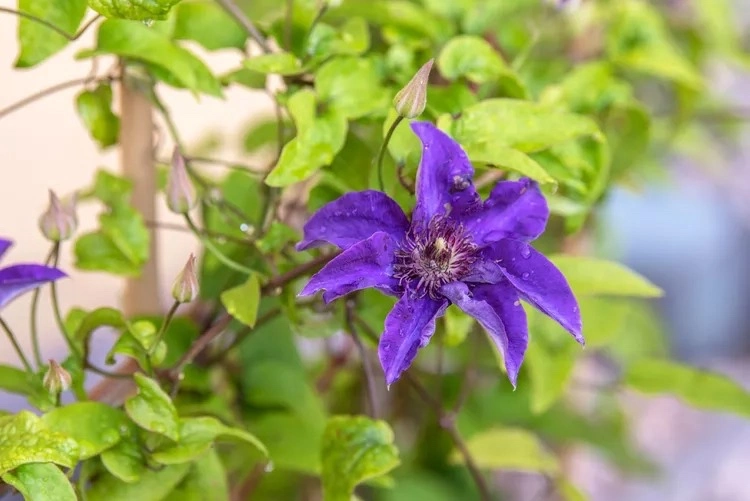
First, it’s important to choose a species that fits your needs. Different species vary in flowering time and vigor of growth. Furthermore, there are numerous varieties that bloom in almost any color. It would be best to seek advice from a garden center before purchasing your new clematis. Here are some of the most popular species and varieties:
- Mountain clematis (Clematis montana): Also called anemone clematis, this species has a vigorous growth of up to 9 ft/3m per year and can reach a total height of up to 32ft/10m. The countless flowers appear between May and June and are usually white or pink in color. Popular varieties are: ‘Rubens’ – pink flowers, very vigorous and fast-growing, ‘Freda’ in deep pink and ‘Wilsonii’ with white flowers.
- Alpine clematis (Clematis alpina): A hardy clematis species that is very easy to care for. It blooms from May to June and the flowers are small. This clematis can also grow creeping. Beautiful cultivars include: ‘Ruby’ with burgundy flowers, ‘Willy’ with white-pink flowers and ‘Pamela Jackman’ in blue-purple.
- Clematis hybrids are known for their large flowers with beautiful colors and long blooming season. Most varieties are very fast-growing and can cover fences, walls and pergolas beautifully. Some of the most popular cultivars are ‘Nelly Moser’ – pink-red striped flowers, ‘Summer Snow’ has fragrant white flowers with golden centers, ‘Madama La Coultre’ also blooms in white and ‘The President’ charms with a deep blue-purple flower color (picture above).
- Italian clematis (Clematis viticella): This species has a profuse bloom that lights up the garden from June to September. Italian clematis is very hardy and less susceptible to diseases. The most beautiful cultivars include ‘Etoille Violette’ with purple flowers, ‘Mme Julia Correvon’ in crimson, ‘Prince Charles’ in light blue and the bicolored ‘Minuet’ in white and magenta.
- Evergreen clematis (Clematis armandii): An evergreen species of clematis that blooms pinkish-white in spring from March to May. The most popular variety ‘Apple Blossom’ exudes a delightful scent and can also be used as a ground cover.
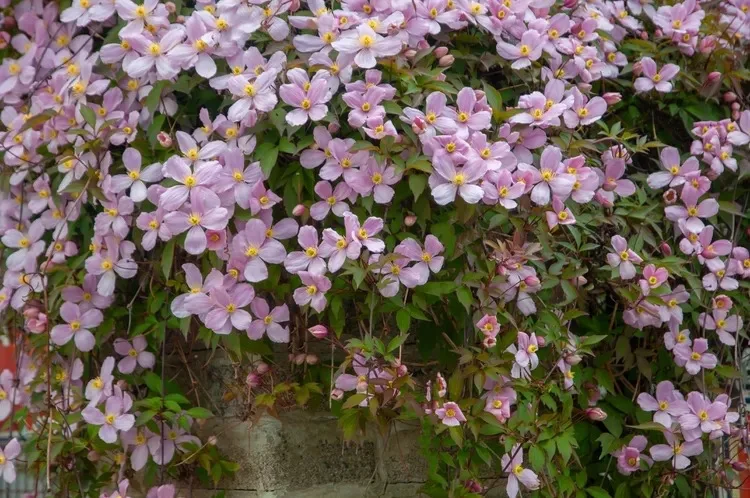
The Right Location
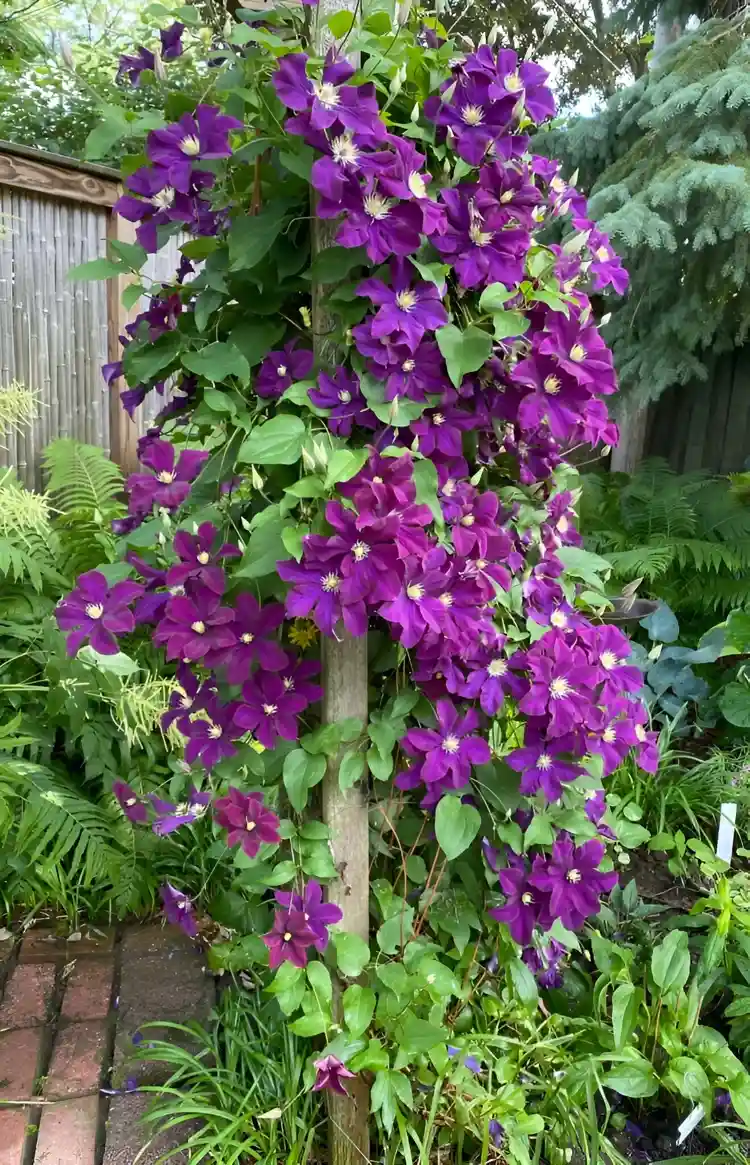
Clematis thrives best in a sunny spot, however, the base of the plant should be in the shade. Therefore, sunny to semi-shady places such as east- or west-facing house walls, walls and pergolas are best. Make sure that at least 10 inches/30 centimeters of the bottom of the plant do not get any sun. You can also use some plants as underplanting for this purpose. Since clematis is a climbing plant, you can plant it in the garden to a climbing obelisk or under a tall tree with a light crown.
In What Soil to Plant Clematis?
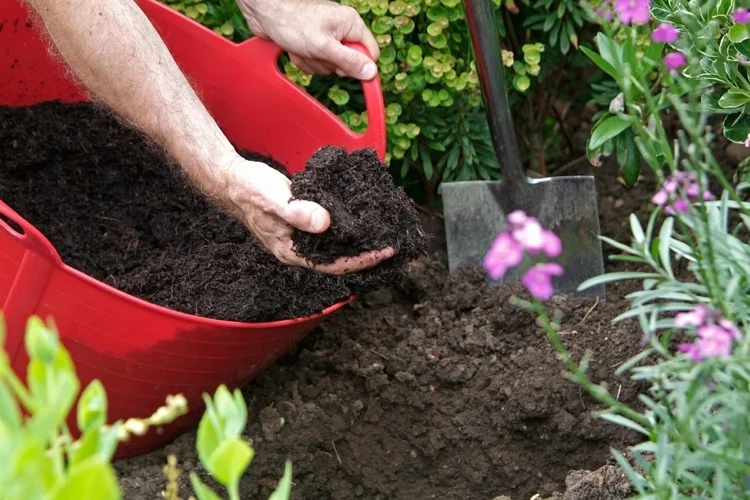
The soil in which you plant your clematis must be rich in humus and loose. The plant does not tolerate waterlogging, so in heavy soils a deep hole with 3 inches/10 cm of sand on the bottom is required. Mix the excavated garden soil with compost, sand and good potting soil. The soil may be slightly calcareous, but not too acidic. A pH of 5.5 to 6 would be optimal.
Planting Instructions Step by Step
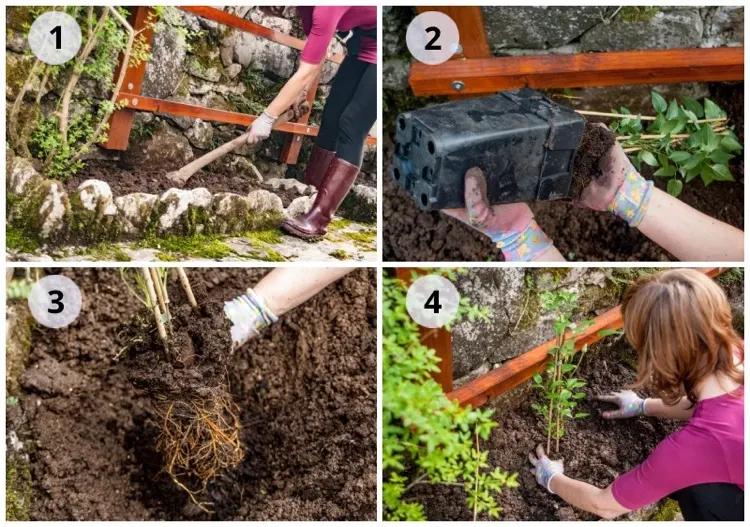
- Prepare the root ball: Submerge the clematis, including the pot, in a bucket of water to moisten the soil. Then carefully remove the plant from the pot without tearing off the delicate shoots.
- Dig a planting hole: Dig a planting hole approx. 15 inches/40 cm deep so that after planting the entire root ball is under soil. Spread some gravel in the hole as drainage. Mix the excavated soil with mature compost and a handful of horn shavings.
- Plant Clematis: Place the plant in the hole and fill in with the enriched soil. Note that the bottom two pairs of eyes should go into the earth. Gently press the soil on the surface.
- Watering and mulching: Thoroughly water the freshly planted clematis and apply a 3 inch/10 cm layer of mulch to protect the root area.
Provide Climbing Support
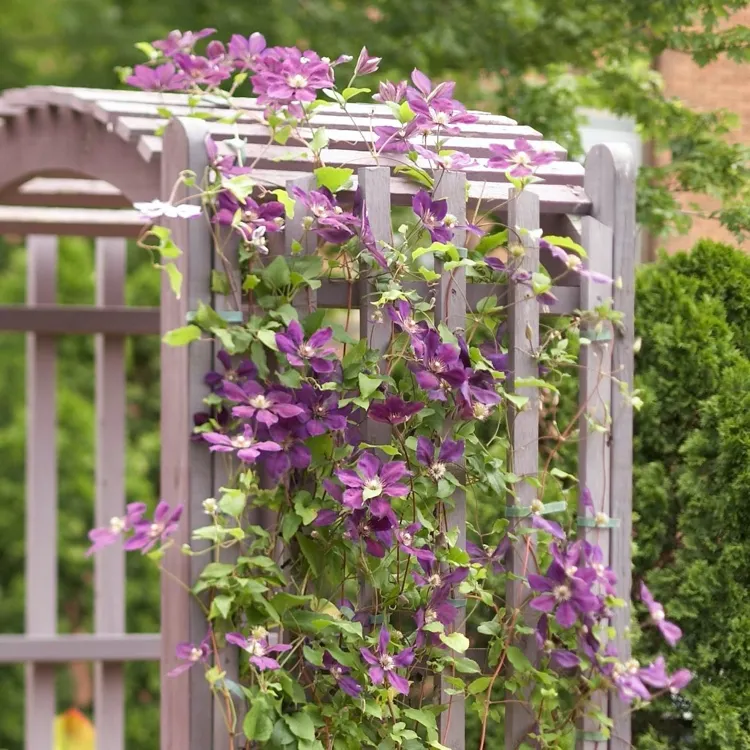
Most clematis species need climbing aid to grow in height. Wooden climbing aids are best because they have constant temperature and create a harmonious overall picture. If the clematis should climb a tree, you can loosely cover the tree trunk with wire mesh so that the leaf tendrils can find support.
Planting Clematis in a Container: What to Consider?
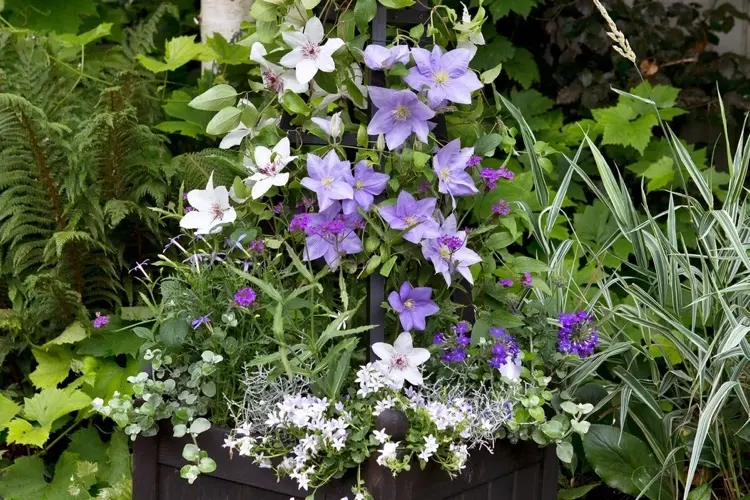
Clematis varieties that do not grow too much in height can be planted in containers. However, the planter must have a soil volume of at least 5 gallons/20 liters so that the roots can grow well and the plant has a secure stand. Good drainage is also important. The container should have drainage holes and you should put a layer of expanded clay on the bottom to prevent waterlogging.
Conclusion: Plant Clematis in Late Summer for a Lasting Bloom
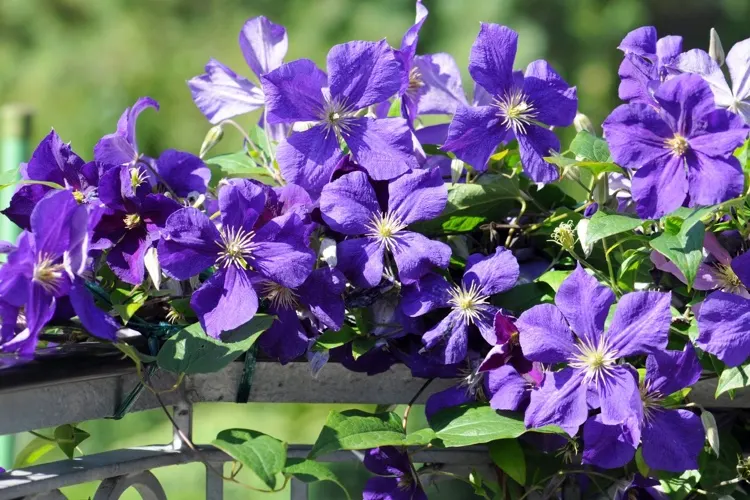
The clematis is a real asset to any garden and can beautify unsightly areas such as walls and masonry. Late summer between the end of August and mid-September is the ideal time to plant clematis, as the soil temperature is high enough to encourage root growth. Choose a semi-shaded spot for your new clematis, where the top part of the plant gets some sun and the base is in the shade. Plant your clematis now so that it delights the eye with its blooms next year.
Also read: What to Plant after Tomatoes in Fall?
